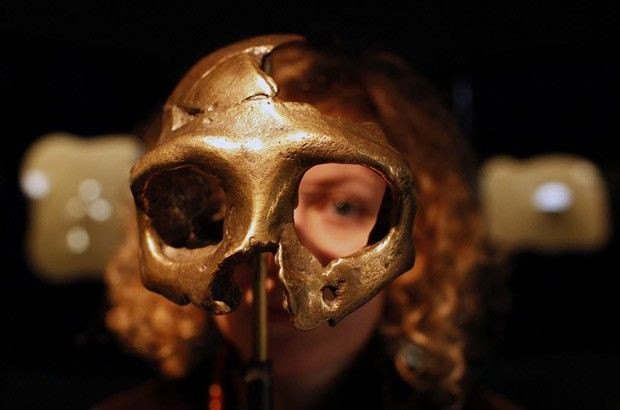Modern Humans Likely Interbred With Extinct Relatives

Our ancient human ancestors may have bred with a now extinct species of humanity before leaving Africa, new research indicates.
While modern humans, known as Homo sapiens, are the only surviving lineage of the human race, other early humans existed on Earth and made their way out of Africa before our species did. Recent genetic analysis of fossils from other ancient human species, such as Neanderthals in West Asia and Europe and the Denisovans in East Asia, have revealed they once interbred with Homo sapiens, giving modern humans genetic mutations that protected them as they began expanding across the globe about 65,000 years ago.
Now scientists have made another discovery that may help them piece together the genetic lineage of modern humans. Researchers from the University of Arizona, who recently analyzed the human genome, discovered that our species mated with a previously unknown species of humanity before our ancient ancestors even left Africa.
We need to modify the standard model of human origins in which a single population transitioned to the anatomically modern state in isolation-- a garden of Eden somewhere in Africa -- and replaced all other archaic forms both within Africa and outside Africa without interbreeding, Michael Hammer, a population geneticist at the University of Arizona in Tucson, told LiveScience.
Because of the warm temperatures in Africa, DNA from ancient human fossils located on the continent has not survived, making it difficult for researchers to accurately pin down the variety of human species that Homo sapiens may have interbred with. However, Hammer and his colleagues were able to gather DNA samples from the Center for the Study of Human Polymorphisms and sequence vast regions of human genomes from samples taken from six different populations living in Africa today in order to find an ancient genetic connection.
Using simulations to predict what ancient DNA sequences would have looked like had they survived within the DNA of modern human cells, the team tried to match up the modern human sequences with what they expected those sequences to look like in their antiquated form.
We discovered three different genetic regions fit the criteria for being archaic DNA still present in the genomes of sub-Saharan Africans, said Hammer. Interestingly, this signature was strongest in populations from central Africa.
Scientists focused on several markers to determine if a DNA sequence qualified as archaic. For instance, a sequence that was radically different from those found in a modern human population was likely to be ancient, as well as if an unusual piece of DNA stretched over a significant portion of a chromosome. The longer these sequences -- known as haplotypes -- are, the more recently they have entered the population.
About two percent of contemporary African DNA may come from this early hominid lineage. In comparison, recent studies suggest that other populations still bear the genetic traces of their now-extinct relatives: Neanderthal DNA may make up one percent to four percent of modern Eurasian genomes, with Denisovan DNA making up four percent to six percent of modern Melanesian genomes.
While ancient DNA only accounts for a small portion of modern humans' genetic code, Hammer said that does not mean interbreeding wasn't more extensive among our human ancestors.
It could be that this represents what's left of a more extensive archaic genetic content today. Many of the sequences we looked for would be expected to be lost over time. Unless they provide a distinct evolutionary advantage, there is nothing keeping them in the population and they drift out, he said.
To get a better understanding of how ancient interbreeding may have occurred, Hammer's team wants to study the entire genome sequences of several modern human groups in Africa. Moreover, researchers are also interested in searching for ancient DNA from this extinct human species that may have conferred an evolutionary advantage to their hybrid offspring.
Scientists estimate that hominids branched off from their common ancestor with chimpanzees about five to seven million years ago. While some experts suspect Homo sapiens arose in Africa and migrated out of the continent, replacing other ancient human species in Asia and Europe, others hypothesize that the species evolved from interbreeding after Homo erectus journeyed from Africa about 2.5 million years ago.
© Copyright IBTimes 2024. All rights reserved.





















